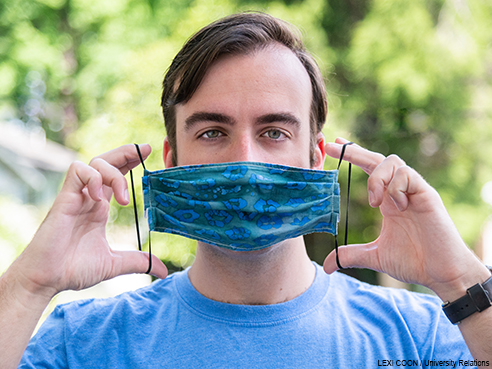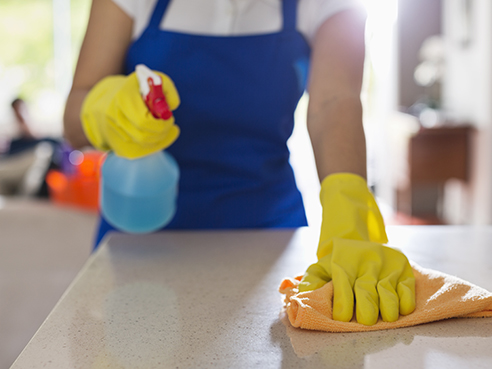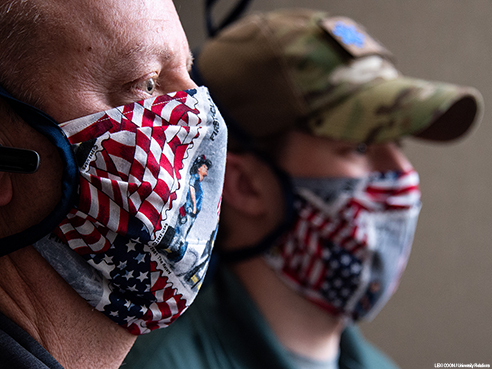 Wearing appropriate personal protective gear (PPE) is a simple, yet effective way to do your part to help stop the spread of coronavirus — but only when you do it correctly and hygienically, say UAB medical experts.
Wearing appropriate personal protective gear (PPE) is a simple, yet effective way to do your part to help stop the spread of coronavirus — but only when you do it correctly and hygienically, say UAB medical experts.
Beginning May 1, a new Birmingham city ordinance requires people interacting with others in a public place within the city limits to wear a cloth face covering, and businesses are expected to ensure their employees and visitors observe the requirement. UAB is providing masks for onsite employees in tier 1 of workgroups A and F. Children under the age of 2, citizens with specific health risks or people undergoing certain medical examinations are not required to wear masks; see the full guidelines at birminghamal.gov.
“The purpose of wearing a cloth face mask is not to prevent you from getting the virus, but to protect other people from getting the virus from you,” said Penni Watts, Ph.D., an assistant professor of nursing at the UAB School of Nursing. “The mask protects others from your germs when you cough or sneeze.”
Watts adds it is also a way to help people avoid touching their faces, specifically the nose and mouth — where the virus can enter and infect the body.
Curious how you can best wear a mask and gloves to protect yourselves and others? Check out tips from UAB experts and the Centers for Disease Control and Prevention (CDC) to ensure you’re using PPE properly.
Face masks do’s and don’ts
|
According to the CDC, the mask should
|
Before you pick up your mask, make sure you have washed your hands with soap and water or used an alcohol-based hand sanitizer.
If your mask has straps, tie the top straps first, then the bottom ones. Once it is tied, do not touch the mask again. If your mask has elastic straps, loop those over your ears. It’s crucial that the mask covers your nose and your mouth, says UAB infectious disease physician Rachael Lee, M.D. Do not wear it below your nose.
“I have seen people wearing it below their noses, on their chins, on top of their heads. It needs to completely cover your mucosal area, which is your nose and your mouth,” Lee said. ““If you feel it slipping, make sure you wash your hands again before you adjust it.”
Before you take your mask off, wash or sanitize your hands. It is also important to remember which side was on the outside.
“Do not touch the outside of the mask while wearing it and try to avoid touching the outside when you remove it,” Watts said.
When you take the mask off, you should carefully fold it to protect the side facing your mouth and nose. Then you can put it in a paper bag for storage until you need it again.
Wash your hands one more time after you put the mask away.
How can I clean my mask?
|
“Do not touch the outside of the mask while wearing it and try to avoid touching the outside when you remove it.” |
The best way to clean a cloth face mask is to wash it in a washing machine. You should wash and dry it at least once a day if possible, experts say.
If you do not have access to a washing machine, you can handwash the mask using soap and water.
Once it is clean and dry, store the mask in a new paper bag or in a place where it will not be touched or coughed on by other people in your home.
What’s the guidance for gloves?
Always wash your hands before donning gloves, the CDC recommends. The gloves should extend up to your wrists.
When you no longer need the gloves, remove them before removing your mask or other items of clothing; watch a video from the CDC to see how best to remove your gloves to prevent contamination of nearby items. Be sure to wash your hands after discarding gloves.
Read more:

4 ways to protect your home from the flu

See how Blazers are working well in midst of COVID-19 crisis

